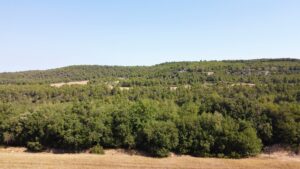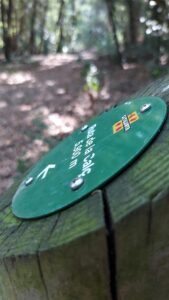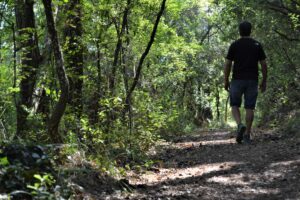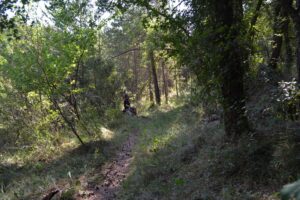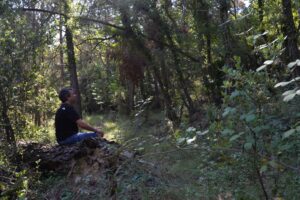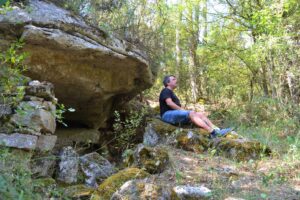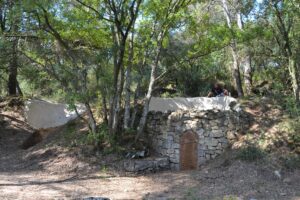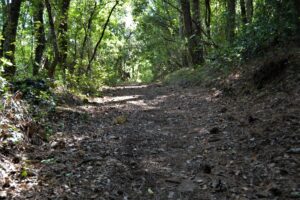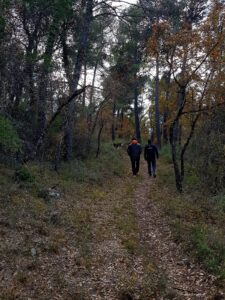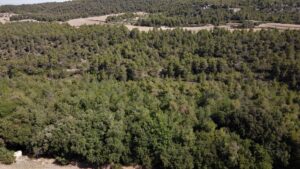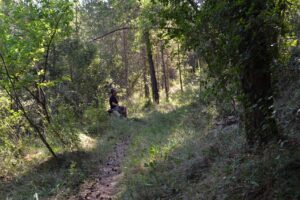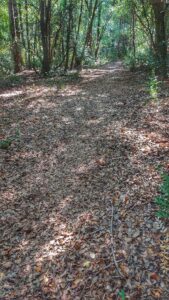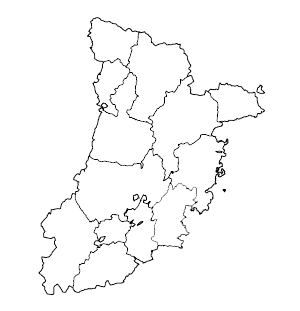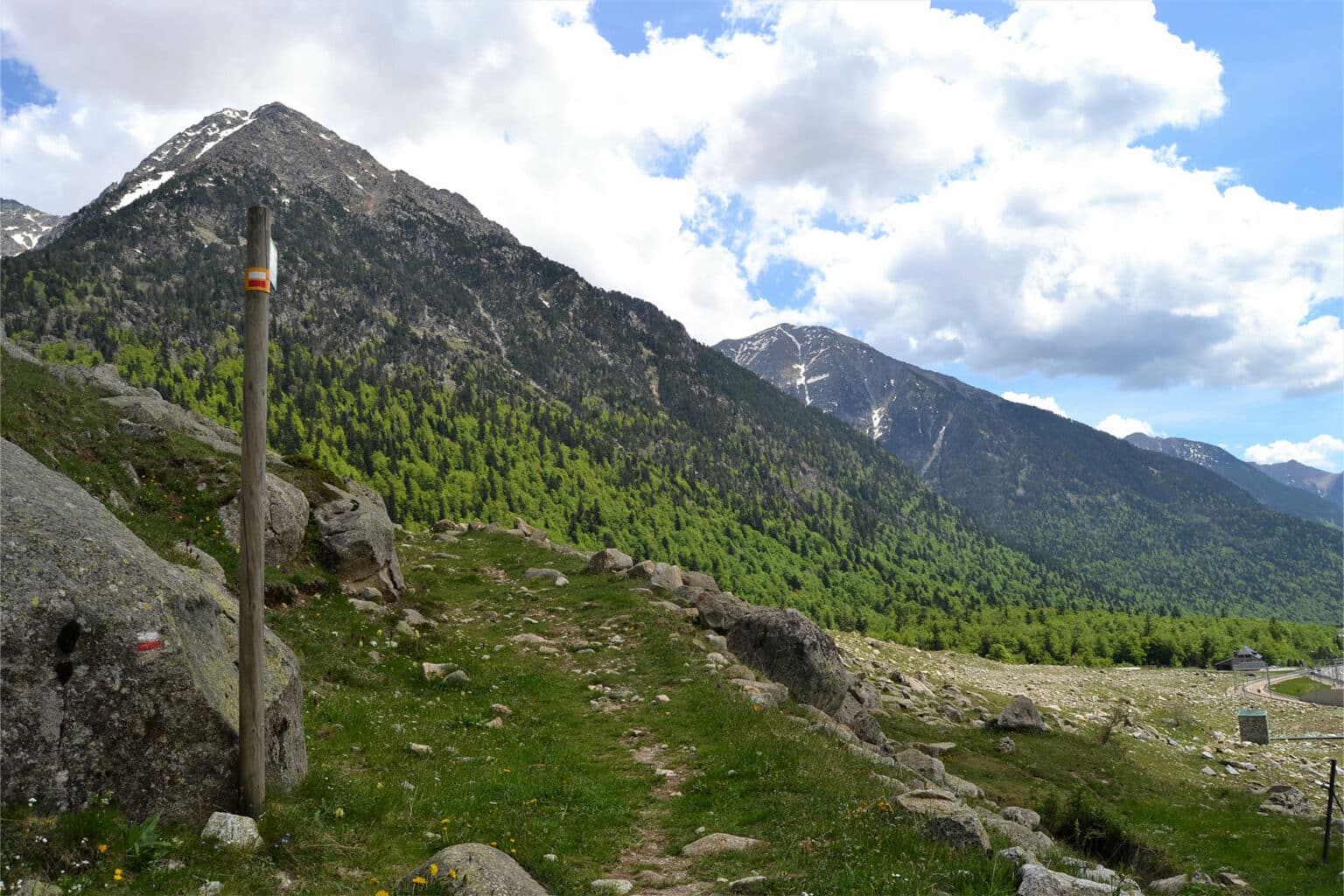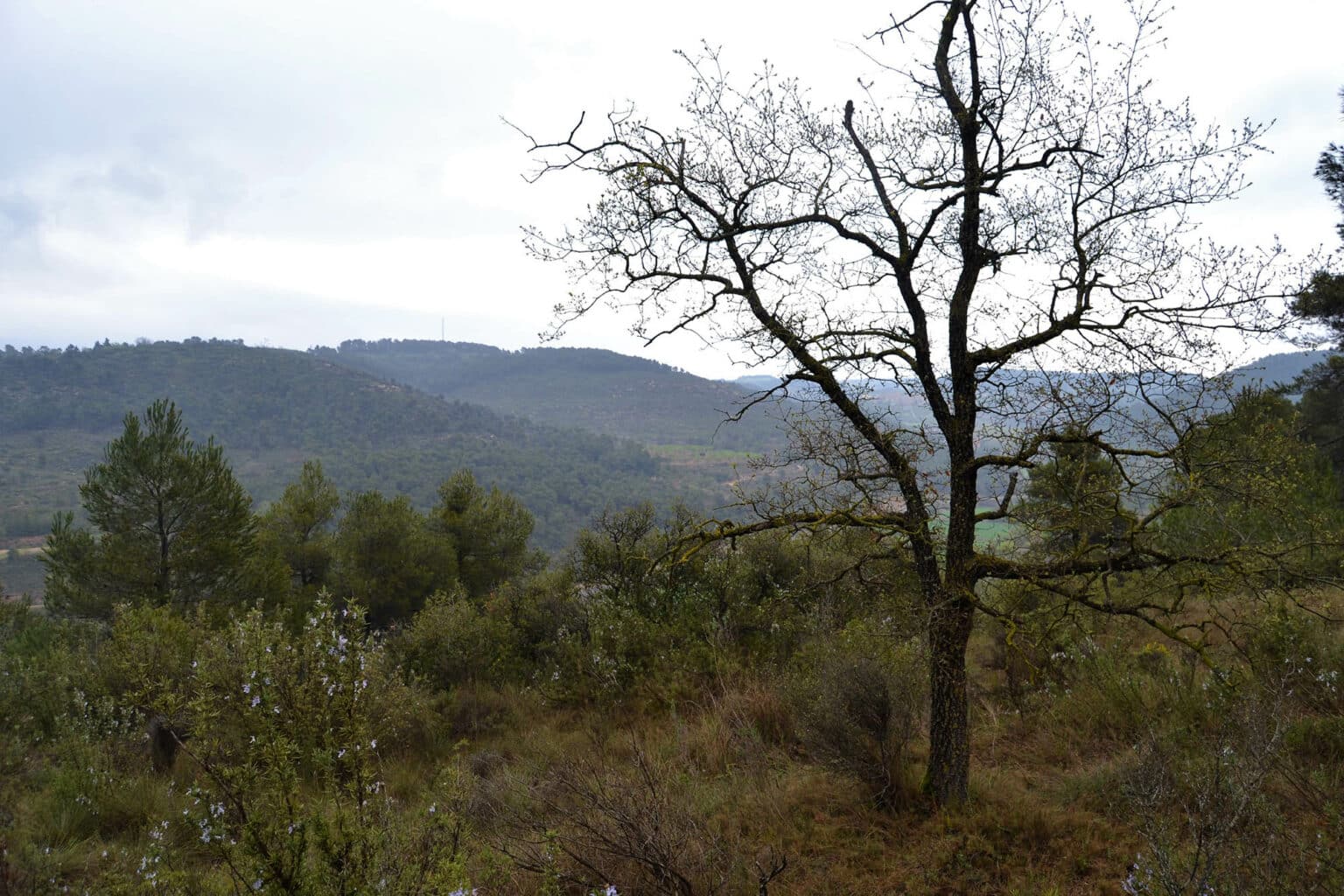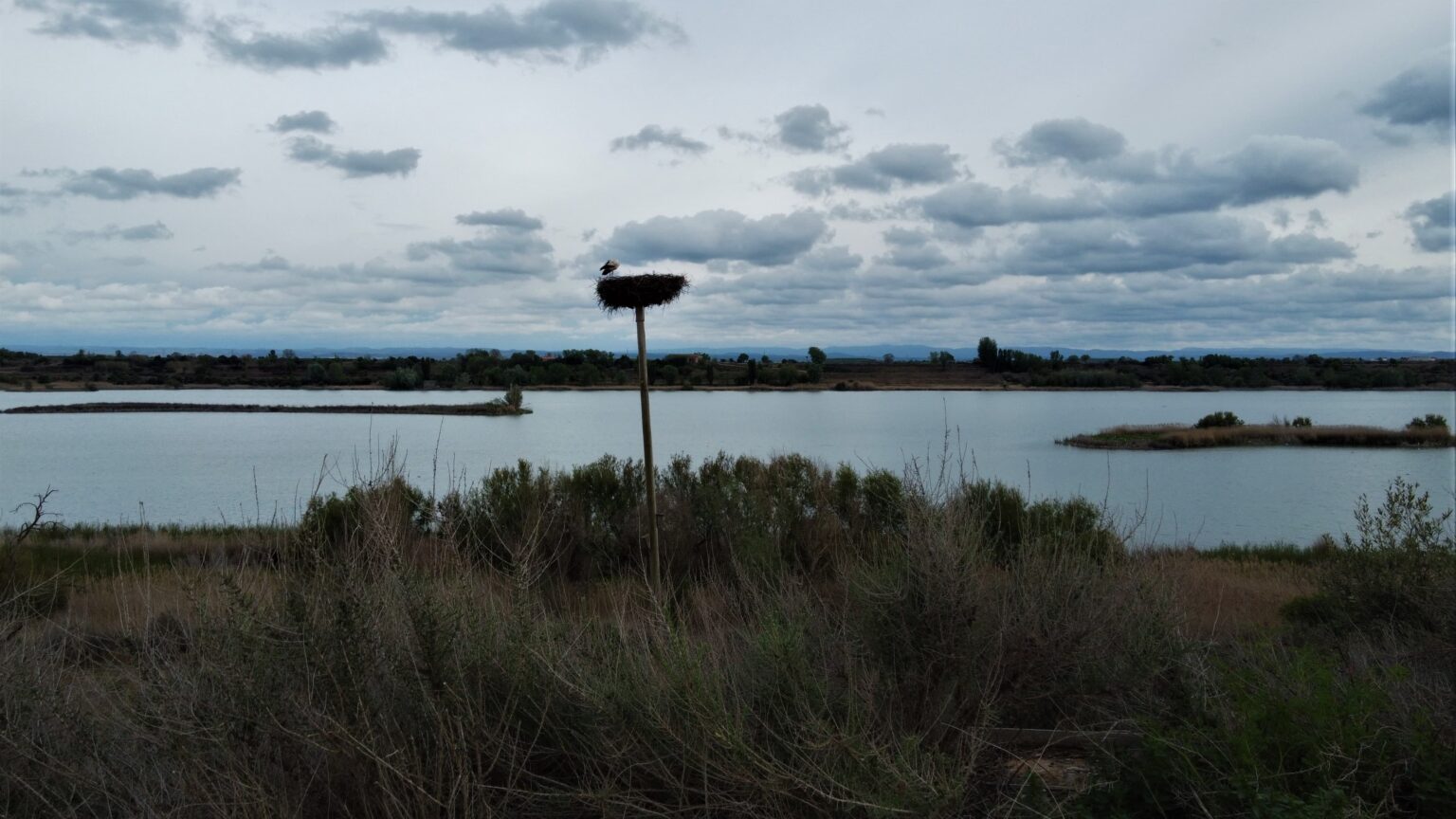FOREST BATHS
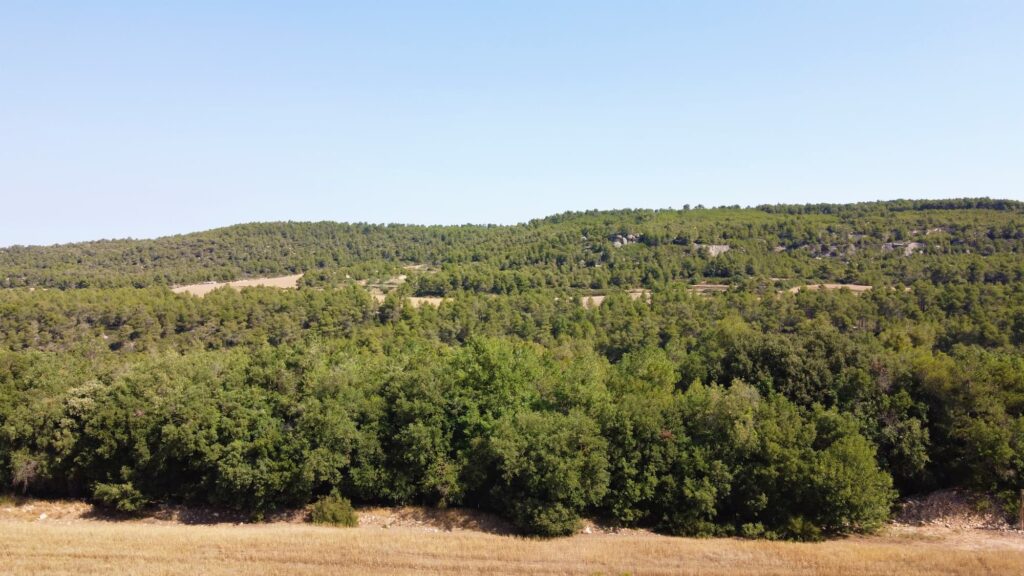
Among lime kilns at Les Comes de Montgrat
Les Garrigues can be found at the transition between the Mediterranean and continental climates. It is an area with great contrasts between summer and winter and it is a very arid area, which receives very little precipitation. In fact, today, it is one of the most arid comarques (local districts) in Catalonia. This climate is associated with the presence of xerophytic Mediterranean vegetation, with a general predominance of brushwood. Not surprisingly, maquis shrubland (or garrigues) is particularly common, and it seems that the name of the comarca derived from its abundant presence. In the most eastern and southern part of the territory, such as the north-facing slopes of the Serra de la Llena, the most outstanding vegetation is that associated with dry Mediterranean low mountains. In the north-east, the Vall de Vinaixa is a Protected Natural Space which is known for its hills and undulating relief and which is currently seeking to conserve Bonelli’s eagle.
Very near to the Vall de Vinaixa is the municipality of Tarrés, where visitors will find the space proposed for forest bathing. To get there, it is necessary to follow the road to Fulleda, until you reach an area which is called Els Plans. Three kilometres further on, there is an access road to the Vilobí 2 wind farm. Take the turn off to the left and it is possible to park at the foot of the windmills. There, you will find signs for the Ruta de la Calç (Lime Route) and it is necessary to follow the signs. This is a circular route which will lead you on a walk through the forest, and between lime kilns; it is very well signposted. You cannot get lost. At the beginning, it is necessary to take note of the fact that where there is a fork in the route, the path to follow is the one that branches off to right. On occasions, you may find the odd vehicle or bicycle at the beginning of the route, but that is not very common.
The area that is recommended in Les Garrigues is a section of the Ruta de la Calç. The whole route has a distance of 14.6 kilometres and is of medium difficulty. It is on an itinerary that is good for those who prefer a longer hike or walk. At Tarrés, there is one of the largest groups of lime kilns in Catalonia, with more than 60 kilns being recorded in the municipal district. Some of these have been directly dug out of the earth, while others have bene excavated from rock; the great majority are located in the forest. These kilns, which are currently in disuse, were once used to obtain lime from limestone through a process of exposing this rock to temperatures of 900 to 1,000ºC. Their existence has played an important role in the evolution of the forest, as the main material used as kindling was obtained from its undergrowth; pine logs were also regularly cut, but normally put to other uses. At present, it is possible to find a good number of reconstructed kilns along the route and these are good points at which to carry out exercises related to interacting with nature.
Despite being near the wind farm and the Serra de Vilobí, the acoustic pollution in the forest is imperceptible. In summer, there is more sun at the beginning of the route, as it is more open and offers a better view of the surrounding landscape. What mainly attracts people’s attention are the singing of the cicadas and the aroma of rosemary. Early in the morning, or towards evening, above all, it is also sometimes possible to see wild fauna, such as roe deer. After about 400-500 metres, the footpath becomes narrower, and crosses a wooded plain. You will then suddenly come across the first lime kiln on this part of the route: the Buscarró del París.
Having arrived at this point, you will enter the darkest part of the route, at what are called the Comes de Montgrat. Here, the greenness is exceptional. In spring, this is thanks to the lushness of the forest; in summer, it is a temperature oasis, and a place in which you can take a walk without suffering from the heat; and in autumn, the deciduous leaves offer an attractive mosaic of brown colours amongst the pine trees. The area is characteristically like this because the earth is very calcareous and due to an abundance of Scots pine. The latter give the area quite a unique appearance; on account of its altitude, this is not a tree frequently found on this terrain. On the other hand, throughout the itinerary, you will find different ethnographic elements, such as fountains and kilns, although to see some of them, you will have to momentarily leave the main route. These are very accessible and interesting places and provide sufficient space for activities involving interactions with nature that can complement forest bathing. In the 1960s, there were many vineyards in this area, and also some cereals, but the dominant culture was that associated with wine making. Based on the remains of the walls of old terraces, it is possible to deduce the crops historically grown here, although the forest now completely dominates this landscape.
The space for forest bathing
On this slow walk, the transition between the Mediterranean climate and the continental climate becomes very evident. As previously commented, the Scots pine (Pinus sylvestris) is the main protagonist in the small valley of Les Comes de Montgrat; this is largely thanks to the microclimate provided by the shade. On the other hand, in the part exposed to abundant sun, the Aleppo pine (Pinus halepensis) predominates. The Scots pine is an evergreen tree with deep roots that seek water. It is therefore somewhat surprising to find it in abundance in this part of Les Garrigues, which is a comarca dominated by a dry, continental Mediterranean climate, and characterised by limited precipitation, continuous fog, and cold winters with persistent frosts. However, despite its need for water, this is a tree that can withstand drought quite well, and it is a type of conifer that is particularly well-adapted to arid conditions. In fact, resin is a substance specific to conifers which, as well as serving to protect them from possible predators, is also useful for protecting them from the heat and cold. Its smell is very intense and unmistakeable, as is its viscosity! The Scots pine is usually very tall and can reach heights of 40 metres. It has a more or less conical structure, particularly when young, while it becomes wider, and rather more irregular in form, when mature. Its bark is a reddish colour, particularly in the highest parts of the trunk, and this is why it is commonly known as the red pine. All along the route, you will find impressive examples and some truly magnificent trees. These can be found on different slope levels and there are also some trees that have fallen, due to natural causes, and whose wood is currently in different stages of decomposition.
Along the route, as well as Scots pine, you will find other species worthy of highlighting, such as the Pyrenean oak (Quercus pyrenaica) and the Montpellier maple (Acer monspessulanum). These are deciduous trees which are lower in height than the pines (the Pyrenean oak typically grows to a height of 15 metres, while the Montpellier maple rarely grows above 6 metres) and have dense, rounded crowns which, in autumn, cover the undergrowth with leaves and decorate the forest with their yellowy and toasted tones. Despite its scientific name, the Pyrenean oak is not a species that is native to the Pyrenees and although it has thick bark which is reminiscent of that of the holly oak, it is, in fact, a member of a different part of the oak family. The type of vegetation found in the shady part of Les Comes de Montgrat is completely different from that in the rest of the municipal district. Furthermore, visitors will note that the ground here tends to be completely covered in vegetation. It is also possible to find an abundance of checker trees (Sorbus torminalis), service trees (Sorbus domestica), strawberry trees (Arbutus unedo), ivy (Hedera helix), and butcher’s broom (Ruscus aculeatus) in this area. These, and other species of vegetation, combine to provide a forest atmosphere which is totally conducive to the practice of forest bathing.
To close, it should be added that it is possible to directly access Les Comes de Montgrat from the car park. If you only wish to do that, you should simply follow the signposts.

